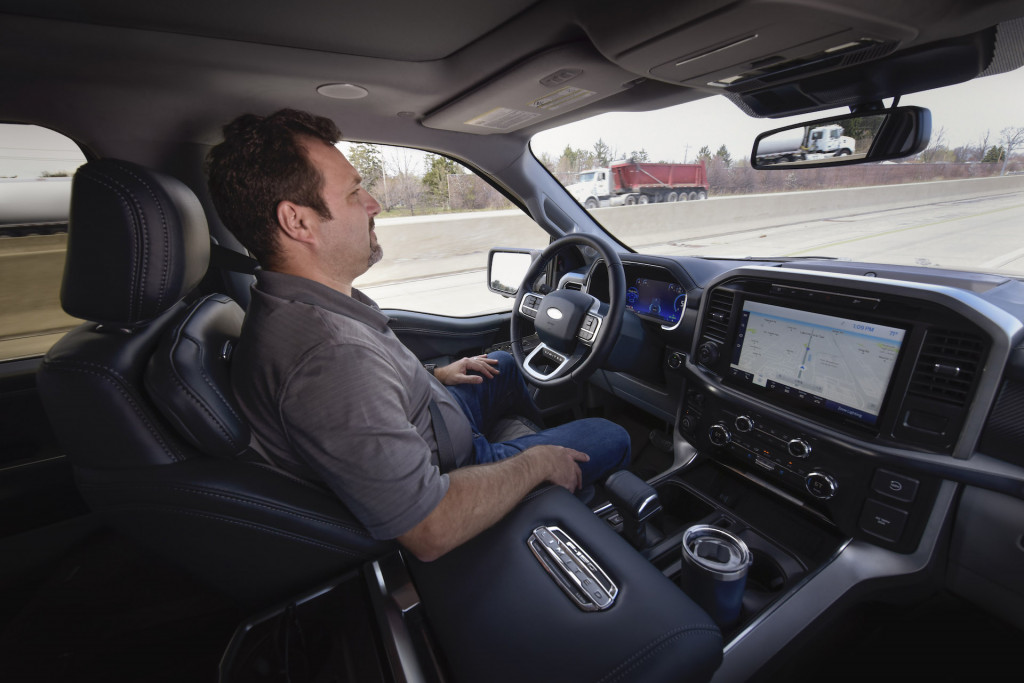Table Of Content
- Ford BlueCruise Makes Hands-Free Driving Easy
- BlueCruise is watching you
- Hitting the Road With BlueCruise, Ford's Hands-Free Highway Helper
- A little more breathing room in the lane
- Ford BlueCruise v1.2 Review: Hands-Off Highway Driving Gains Some Impressive New Skills
- Automated Lane Changing makes life much easier
- Ford BlueCruise Verdict

Advanced Level 2 systems like Ford BlueCruise can't take responsibility away from the person behind the wheel, but they can let them take their hands off that control. Ford's other tweaks in BlueCruise v1.2 include Predictive Speed Assist, which promises to change the speed setting ahead of places where human drivers might typically slow down. That might be as you enter a curve, for example, or as the speed limit on a stretch of highway changes. Ford basically built a version of General Motors' groundbreaking Super Cruise, which launched in the Cadillac CT6 sedan and has been out for about five years. The functionality of these two systems is almost the same, though GM's Enhanced Super Cruise does have two significant advantages.
Ford BlueCruise Makes Hands-Free Driving Easy
Ford's BlueCruise Hands-Free Driving Assist Under Investigation After Fatal Crash - The Drive
Ford's BlueCruise Hands-Free Driving Assist Under Investigation After Fatal Crash.
Posted: Mon, 18 Mar 2024 07:00:00 GMT [source]
That's despite the Mustang Mach-E shifting very close to the edge of the lane at points, away from the neighboring truck. Just how long you can look away depends on a number of factors, but generally after a few seconds of inattention you'll get an audio warning and a message displayed on-screen. There's an escalating series of beeps and visual alerts, and finally BlueCruise will deactivate completely if it deems the driver isn't playing their part.
BlueCruise is watching you
Perhaps more notable, you don't have to buy the fanciest trim in order to add BlueCruise. For the most part, you can switch these settings on and off piecemeal. Lane Centering, Predictive Speed Assist, In-Lane Repositioning, and Lane Change Assist can all be enabled or disabled while the vehicle is in motion, through the Driver Assistance section of the settings pages.
Hitting the Road With BlueCruise, Ford's Hands-Free Highway Helper
GM's Super Cruise Hands-free Expands Again, Nearing 1 Million Miles - Newsweek
GM's Super Cruise Hands-free Expands Again, Nearing 1 Million Miles.
Posted: Thu, 15 Feb 2024 08:00:00 GMT [source]
That, plus a number of unexpected deactivations in highway corners, left me expectant that Ford would refine the experience using over-the-air (OTA) updates. Currently, BlueCruise is available on the Mustang Mach-E, the F-150, the F-150 Lightning, and the Ford Expedition. That's not the full extent of Ford and Lincoln's line-ups, true, but it's a strong cross-section of them.
A little more breathing room in the lane
Again, don't try to send an email while driving or look up sports scores. BlueCruise will know what you're trying to do and the system will not like it. From behind the wheel of a 2023 Mustang Mach-E Select, though, I'd say it's worth the wait.
Ford BlueCruise v1.2 Review: Hands-Off Highway Driving Gains Some Impressive New Skills
But first things first, let's cover what BlueCruise is and what it is not. This technology is a hands-free driving aid that only works on approved, divided highways, so-called Blue Zones, which there are about 130,000 miles of in North America. The system can accelerate, steer and stop the vehicle as traffic and road conditions dictate.
While hands-free Level 2 systems remain controversial, not least because of the potential for drivers to overestimate just how capable (and autonomous) they really are, I'm still a fan overall. BlueCruise feels far more mature and stable than when it did when I first tested the technology. That's not to say it's perfect — and, given all of these systems are Level 2 despite being hands-off, there's no claim that you can stop paying attention — and highway lane shifts can still cause some fumbles. The change from two to three lanes, for example (or vice-versa), can cause BlueCruise issues at times, though the system is swift to resume once you're back to more predictable roads. That, for example, could already change lanes for you without the system deactivating; these days, it can automatically do so if you find yourself stuck behind slower traffic.

If it's raining or snowing heavily, the system will have issues. BlueCruise may also be averse to orange barrels, that is, the system could have trouble in construction zones. And finally, it will disengage if you drive out of a Blue Zone.
The second is Lane Repositioning, intended to build confidence in the system when you're surrounded by other — often larger — vehicles. The system steers smoothly and has no trouble with surrounding traffic. The Ford system tends to make more small steering wheel corrections and can ping-pong slightly between lane markers when going through tighter corners. Despite these minor issues, the system is confidence-inspiring and makes long highway drives much more relaxing. This options group is priced at $1,995, though BlueCruise -- and just about everything else -- is standard on the range-topping F-150 Limited.
This hands-free driving aid is currently included in the $3,200 Comfort and Technology Package, which also bundles a bunch of other amenities. Higher-performance GT models offer BlueCruise in the $1,900 Ford Co-Pilot 360 Active 2.0 and 360-Degree Camera options group. If you get a vehicle equipped with BlueCruise, you'll be set for three years.
In practice, I noticed it most when BlueCruise suddenly overruled the speed I'd set it to. That was particularly the case when it led to the Mustang Mach-E slowing aggressively while I had another vehicle close behind me. It's with those highway behemoths that you notice it in action most. Ford says that more extreme lane bias will prompt an on-screen message, explaining what's happening, but I never saw that appear in my test driving.
This advanced driver aid operates on some 130,000 miles of approved roadway in North America and, for the most part, it works well. Despite all the hype around autonomous driving, the reality is that we're still a long way from cars that can operate themselves completely. Trust the tech too enthusiastically, and you're going to get burned. As before, BlueCruise relies on a camera to make sure you're paying attention to the road. It's mounted just above the steering column, and — while you can't see them — there are infrared lights in there to allow the system to keep working even at night. It'll play nicely if you're wearing eyeglasses or sunglasses, too.
In simple terms, think of this as a hands-free version of adaptive cruise control with lane centering. Nonetheless, highway driving is a chore, and I undoubtedly feel more comfortable at the end of it with a system like BlueCruise to support me. The challenge — as with most advanced driver assistance — is ensuring attention without nagging so aggressively that it's not worth having the tech turned on. Once you're on an approved divided highway, BlueCruise is a snap to engage. It starts in adaptive mode with lane centering, something that's indicated within the meter cluster by an icon of a steering wheel with hands on it. After the system finds its bearings, BlueCruise usually engages a few seconds later, with a large steering wheel icon emblazoned with "Hands-Free" taking up a sizable chunk of the digital gauges.
A second or two later, assuming there's nothing in the adjacent lane, and BlueCruise moves across. Another graphic showing the direction of the maneuver appears while that's happening. In testing, the biggest weakness of BlueCruise is how it handles off-ramps. When a new exit lane opens and you're driving ahead in the adjacent lane, the system will sometimes disengage and revert back to conventional adaptive cruise control. Fortunately, BlueCurise usually reengages a few seconds later once it figures out you're not headed for the ditch, but this is still a bit annoying and it happens more often than I'd like. There are situations, as I learned on a lengthy drive up Michigan's I-75, that will cause BlueCruise to temporarily disengage, that is, to revert to conventional adaptive cruise control where you have to steer.
After that, a separate subscription fee will be required, though Ford has not released any details about what this entails. When engaged, you cannot take a nap, play Wordle, organize your collection of superhero action figures, anything like that. There's a surprisingly sensitive driver-monitoring camera system that makes sure you're looking ahead and paying attention because you have to intervene if the system needs it. While Ford has been working, its rivals haven't stood still, of course.

No comments:
Post a Comment